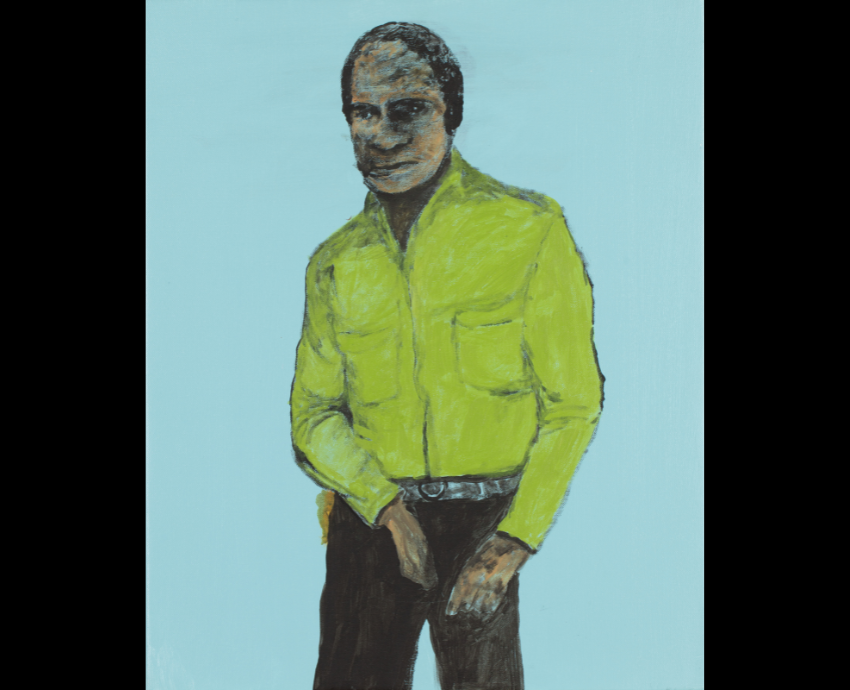
He is Myself: the art of Nyaparu (William) Gardiner
FORM gallery, Goods Shed, Claremont, Perth
Until December 18
dis/possession: identity and sense of place
Art Gallery of Western Australia, Perth
Until 26 March 2023
These two art exhibitions demonstrate the advances that Aboriginal people have made towards incorporating their historical experience into mainstream culture as capitalism has imposed itself on country. They also reveal aspects of capitalist alienation from the land and from the process of labour.
In dis/possession, the Art Gallery of Western Australia (AGWA) has chosen a vast array of works from its collection while He is Myself is a retrospective of Kimberley artist, Nyaparu (William) Gardiner — whose works also appear in dis/possession.
The works demand an analysis of an art form’s material basis and the social conditions in which it was constructed. What is also to be discerned are the differing pictorial vernaculars at work as competing relationships to the same space are represented.
One view is alienated, settler-capitalist and the other integrated-Indigenous.
For example, Nyaparu (William) Gardiner was born in the 1940s and as a child lived through the heroic Pilbara station workers’ strike. He then worked as a stockman around the Kimberley and experienced the hardship that various government policies have created for Aboriginal people.
He started painting in the last four years of his life, producing hundreds of canvases.
The entry to the AGWA space is dominated by one of his portraits, "My Father’s Brother". Its size and simplicity conveys the pride and strength of the Aboriginal pastoral workers. It was their labour on their stolen land that built the wealth of the “Kings in Grass Castles” — wealth that still drives dynastic fortunes to this day.
Immediately to the left are a series of small lithographs and charcoal drawings by Dutch masters of the 1600s, demonstrating the European perspective that was brought to Australia with the invasion. These works are products of capitalism and reflect its contradictions.
There is more than a sense of perception and representation on display, there is social observation reflecting class distinctions.
For example, Paulus Potter’s "Cattle" pictures a young peasant couple having a flirtatious conversation oblivious to the starving cow unleashing a torrent of manure in front of them.
European farmers of the time could not feed cattle through the winter and would typically slaughter all but the minimum number of breeding stock to be hand fed. In spring those animals would be fattened to breed up the herd for the summer.
Paulus’ etching is a caustic satire on rural idiocy, lightyears away from Gardiner’s loving memorials to the Aboriginal rural experience.
Jean-Francois Millet’s 1863 etching, "Le Depart Pour le Travail" ("Leaving for Work"), manages to combine classical style with a nostalgic view of poverty-stricken French peasants going to work in the fields. While certainly sympathetic, this is a top-down view of the life of rural toilers.
Turning into the gallery, the eye is drawn first to Frederick McCubbin’s evocative and melancholy 1889 painting, "Down on His Luck". It is an elegy to the struggling rural workers kicked around the Australian countryside by the dominant squatters.
Next is Hans Heysen’s truly magnificent "Droving into the Light", a massive, radiant canvas demonstrating capitalism’s comfortable exploitation of the landscape.
These paintings are masterly examples of the application of European pictorial standards to the Australian environment. They are both beautiful and telling in that no Aboriginal presence is to be felt in them.
They reflect the assumption that capitalist property relations meant the extinction of Aboriginal Australia.
Other paintings on show, by Aboriginal artists, use totally different representational techniques and tell vastly different stories. One series of canvases tells the story of an Aboriginal farmworker who was pursued by two white stockmen who were intent on killing him.
Others, like Mervyn Street’s "Bull Ride", show the confidence of Aboriginal workers. The bull’s power and the prowess of its Aboriginal rider contrast sharply with Paulus Potter’s depiction of rural life.
Paddy Nyunkuny Bedford’s "Emu Dreaming and Bedford Downs Massacre" uses what would be considered as abstract shapes to narrate its story. It reveals both the experience of Aboriginal people and their psychic world.
While the AGWA approach is eclectic, FORM’s is in-depth. The 50 Nyaparu (William) Gardiner works exhibited offer a lavish narrative of Aboriginal experience.
Gardiner said that he painted what he could see in his head. In his canvases human figures seem to mystically arise from the land, strong and hardy.
Painting after painting exults in Aboriginal culture, resilience and integration into country.